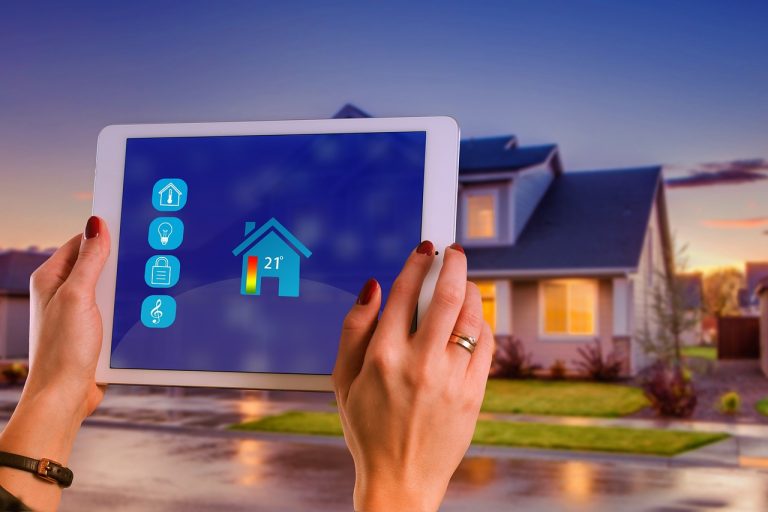Gardening is a great way to escape everyday problems, get closer to nature, and diversify your activities. Some people like to do everything with their hands; for some people, automation is a separate hobby. If we draw parallels with university studies, taking care of all plants without technology is writing a paper manually, and process automation is writing papers and essays with the help of a custom paper writing service, where experts save students’ time and help them avoid unexpected mistakes.
Garden care automation includes several basic parameters, which involve data monitoring, fertilizer and watering automation, and arranging lighting and controlling processes. If you give this task enough time, you can build not only a beautiful but also an almost self-sufficient corner of nature, which will require nominal participation to maintain a healthy state of the system.
Equipment for a Smart Garden
Irrigation systems
Automatic watering systems are a basic innovation you need to make to start calling your garden smart and self-sufficient. There are several basic systems that can be used for this task.
- Drip irrigation: This is a system of hoses with small holes to be placed directly at the plant roots. Drip irrigation ensures that water is delivered in a pinpoint manner while saving resources.
- Sprinkler systems: This option suits large areas like lawns or flowerbeds. Sprinkler irrigation can be customized in terms of water usage and run time, which also prevents excessive moisture evaporation and saves money.
Humidity and temperature monitoring sensors
Smart sensors integrated with gardening apps on your phone provide up-to-date, real-time data on soil moisture and air temperature. With complete information, you can adjust your watering frequency to avoid excessive waterlogging or drying out the soil. These sensors can not only measure and monitor the data but also send you notifications and reminders when you need to water or when the garden is too wet.
Lighting systems
Lighting systems with UV lamps can be a great way to keep plants alive in low sunlight conditions. The lamps can also be customized in intensity and run time to provide ideal growth and photosynthesis rates for specific plant species. Smart sensors can independently adjust the light intensity depending on the excess or lack of natural light.
Garden Automation
Smartphone control
Many specialized apps are now available for smart garden management. Developers have synchronized with many systems available on the market, so you can turn on or off lighting and watering through an app, monitor and organize data on the amount of water used and fertilizer, and predict and adjust costs for more efficient gardening.
Automatic watering and fertilization
Modern systems can surgically measure the amount of water and fertilizer needed for a specific task. This saves resources by eliminating human error and the possibility of error. Automatic fertilization systems can also integrate with sensors to monitor nutrient levels in the soil.
Integration with voice assistants
Applications can be controlled not only manually but also by voice assistants integrated into Apple and Android operating systems. This feature adds variability and convenience to your plant care tasks.
Data Monitoring
Specialized plant care apps collect more than just data on humidity, lighting, and fertilizer amounts. They also track plant life cycles and adjust watering levels and other parameters for optimal care. The apps will send you reminders and offer garden improvement tips that will save you the trouble of searching for information from specialized sources. The more you know, the better you can plan. Please look at the masterpapers review, for example, in which professional reviewers have gathered all the necessary information about the writing service for students so that they have more data to decide. Gardening apps do a similar thing. They give you as many options as possible and warn you about the pitfalls of caring for each individual plant species.
Problem Management
Care automation also allows for better problem-solving. You don’t have to keep everything in your head, as you’ll have up-to-date information from various sensors at your fingertips to help you prioritize problems. In addition, smart systems themselves can prevent critical problems that could lead to plant death. For example, sensors can detect a lack of moisture or excessive temperature and automatically adjust conditions.
Practical Tips
Creating a smart garden requires preparatory work, which involves identifying the location and organizing access to the necessary sources. For example, you need to ensure that you can organize free access to water and electricity in the active growing area and install all the necessary sensors and additional equipment, such as water towers or automatic tents, to create the necessary shade during peak heat hours. Check plant requirements and conditions and make sure that different crops can grow side by side without harming each other.
It is equally important to plan a budget. If you are making everything from scratch, setting up a smart garden may require a significant investment in buying plants, monitoring apps, sensors, fertilizers, and arranging water and electrical utilities. Look for ways to save money, such as using affordable DIY solutions or buying equipment on sale. Saving money on equipment should not come at the expense of quality, so choose trusted brands and systems. It’s also important to consider the cost of operation and possible repair and upgrade costs.
Conclusion
A smart garden can be an exciting project that turns into a full-time hobby for you. You can grow more than just flowers and shrubs in a smart garden. YOU can organize small beds right in your backyard. Modern systems for optimizing the space for growing crops and the help of monitoring sensors will help you grow a good harvest. In this case, you will not only have a great activity that pleases the eye and helps to get rid of stress but also add organic vegetables and herbs to the table grown with your own hands.

0 Comments